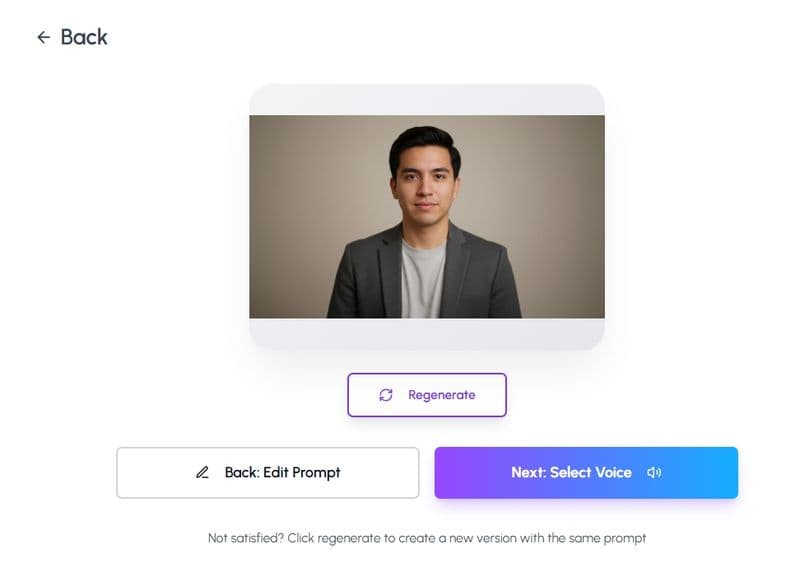
AI anchors are changing weather news by offering fast, accurate, and multilingual updates around the clock. They help newsrooms cut costs while providing consistent, localized weather forecasts for diverse audiences.
As the media landscape speeds up, newsrooms are always searching for faster, more reliable ways to deliver content. This is especially true for weather reports, where accuracy and timeliness are critical. Enter AI anchors—a technological shift that allows news channels to automate weather forecasts and deliver them without relying entirely on human presenters.
How does this impact the newsroom? What are the cost benefits, and does it improve efficiency? Let us dive deeper into the role of AI in transforming weather reporting.
What is weather news automation with AI anchors?
Weather news automation using AI anchors refers to the integration of artificial intelligence to generate and deliver weather updates. Instead of relying on a human presenter, AI anchors—virtual hosts powered by advanced algorithms—take over the task of presenting weather information.
These AI anchors do not just relay data in a robotic manner. They use natural speech patterns, appropriate gestures, and facial expressions to provide viewers with updates that feel familiar and personable. They gather real-time weather data, process it with sophisticated algorithms, and present highly accurate and timely forecasts.
Why are newsrooms are turning to AI anchors?
AI anchors bring practical benefits to newsrooms. Here is why more news organizations are turning to this technology:
Cost-effective. Traditional weather reporting requires a team of professionals, including presenters, producers, and technical staff. AI anchors help newsrooms cut down on these costs by automating routine weather segments. AI anchors work 24/7 without additional pay, allowing stations to keep broadcasts running smoothly without incurring overtime expenses.
Real-time updates anytime. Weather can change quickly, especially during critical weather events. AI anchors provide continuous real-time updates, ensuring that audiences are always informed.
Unlike human presenters, AI anchors do not need rest and can instantly deliver updates when conditions shift.
Localized forecasts across regions. One of AI’s greatest strengths is scalability. Newsrooms can use AI anchors to broadcast tailored weather reports for multiple cities or regions, all without adding extra staff.
Consistency and accuracy. AI anchors provide a consistent level of delivery that helps build audience trust. They rely on real-time data from reliable sources such as the National Weather Service, minimizing human error. Viewers get accurate, up-to-date forecasts every time they tune in.
Real-world examples of AI anchors in weather reporting
Several media organizations around the globe are already using AI anchors to improve their weather news services. Let us explore some real-life examples:
National World (UK)
In London, National World introduced an AI-generated weather presenter, which provides daily weather updates both in video and text form. This AI anchor is available around the clock, ensuring that viewers always have access to weather news.Haystack News (U.S.)
Haystack News offers hourly weather updates with AI in various cities across the U.S., allowing them to provide localized updates without expanding their workforce.Kuwait’s Fedha
Kuwait introduced "Fedha," a virtual news anchor that has started delivering news reports, including weather. Although it is in early stages, it demonstrates the potential for AI anchors in a range of news formats.India’s AI anchors
In India, many newsrooms have started integrating AI into their broadcasts. Doordarshan Kisan and India Today’s Aaj Tak have both introduced AI-powered anchors for their weather updates, marking a growing trend in Indian news automation.
How AI anchors process real-time data
AI anchors are not reliant on pre-scripted content. They pull real-time data from trusted sources, process it using machine learning algorithms, and present it in a way that is easy for viewers to follow.
Here is how the process works:
Data collection: AI anchors collect weather data from trusted sources such as Indian Meteorological Department which are updated frequently.
Data processing: Machine learning algorithms analyze the data and generate accurate weather forecasts.
Script generation: AI systems then produce natural language scripts, which the AI anchor delivers in a conversational and clear manner.
This automation ensures that viewers receive up-to-date information without any delay, which is especially crucial during extreme weather events.
The future of AI anchors in weather reporting
The role of AI in weather news is just beginning to expand. As the technology continues to advance, we can expect new and innovative developments, including:
Augmented reality (AR) integration
AI anchors may soon use augmented reality to enhance their weather presentations. This could include overlaying live weather conditions on interactive 3D maps, offering viewers a more engaging experience.Interactive weather forecasts
In the near future, AI anchors might allow viewers to interact with their weather reports. Audiences could ask specific questions about upcoming weather conditions or request more detailed forecasts, creating a personalized experience.AI expanding beyond weather news
Although AI anchors have found a strong foothold in weather reporting, their potential extends to other segments like general news, sports, and live commentary. As technology progresses, we may see AI anchors diversify their roles within the newsroom.
Is your newsroom ready for AI-driven weather reports?
For newsrooms aiming to modernize and simplify their operations, AI anchors offer an excellent solution. They help reduce costs, provide continuous updates, and ensure accurate information is delivered consistently.
The future of weather broadcasting is becoming increasingly automated, and AI anchors are at the forefront of this transformation. Now is the time to explore how your newsroom can adopt this technology to enhance your reporting capabilities.
At Personate AI, we are leaders in developing AI-powered video solutions, including AI anchors designed specifically for weather reporting and other news segments. We are proud to have created Aaj Tak’s AI anchor Sana and Doordarshan Kisan’s AI anchors Krish and Bhoomi, showcasing the impact AI can have on the future of news. Visit our website, schedule a demo, or write to us at hello@personate.ai to learn how we can help elevate your newsroom’s performance.


